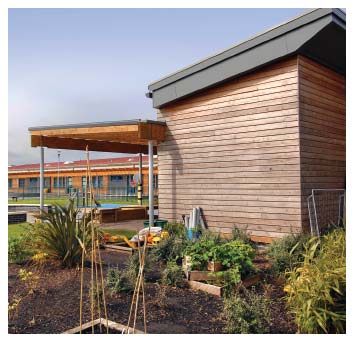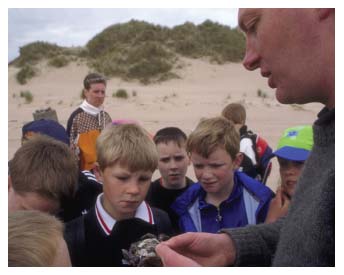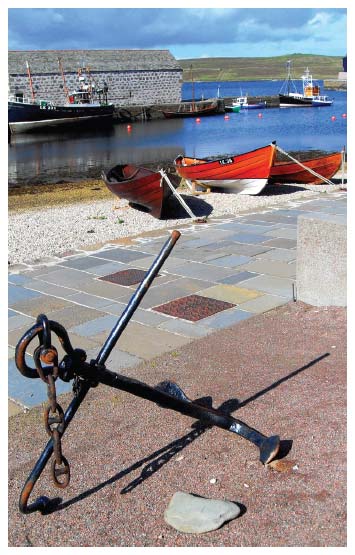Commission on the Delivery of Rural Education: report
The independent commission on the Delivery of Rural Education was established by the Scottish Government and COSLA in July 2011.
This Report makes recommendations on the delivery of all aspects of education in rural areas.
Chapter 4: Schools and their communities
46. People in rural Scotland have a long tradition of valuing and supporting education and the local school is usually seen as an important part of a rural community. It is clear that there will always be a need for rural schools - Scotland's geography dictates that - and there are plenty of examples of vibrant, small rural schools.
47. However, during the course of the Commission's work, a picture has emerged of a pattern of rural schooling developed in the 19th century. Although schools in many smaller and more remote settlements have closed, in other places schooling has adapted little to reflect the changed demographics and economic activity of modern communities.
48. For many remote, rural communities, the last 50 years have seen population decline, demographic change (ageing) and economic decline. However, some rural areas have experienced a significant reversal of earlier population decline. Although much of the growth has been in the expanding hinterlands of cities, as in rural Aberdeenshire, there are also examples of remoter communities where a reversal of decline has occurred both as a result of lifestyle migration, as in the Gairloch area in Wester Ross, and through strategic investments in specific rural communities. There are also areas such as Speyside where a mix of commuting and lifestyle migration has led to increases in population.
49. The net result across Scotland is a complex mosaic of demographic change. Where there are growth points, these are often areas for further strategic investment by councils, for example in new secondary schools. Where there is continued decline in population, there is often an associated decline in and rationalisation of public and private sector service provision, which can potentially still further reduce the attractiveness of living in such areas. Natural change in population, as lifestyles and economics alter, cannot be avoided.
50. Whilst national and local government are committed to a target to "increase population growth", there are no national indicators reflecting on the demographic decline/sustainability of communities in rural areas of Scotland. If depopulation is a key issue for national planning purposes, then policy interventions would be given greater impetus if both national and local government monitored this formally as a national indicator. However, it is critical to note that services such as schools can only be sustained in areas where there is an underlying economic rationale. If an area cannot sustain a viable local economy, including basic as well as dependent service-related jobs 8 , it will not sustain a community. The co-ordination of services can reduce the costs of each service and might help justify small schools in some cases but some economic activity in the area is required.
51. The Commission recognises that local councils have the responsibility to manage change in the provision of rural schooling and would encourage them to do so in a way that synchronises with other policies relating to rural development and sustaining the viability of rural communities. This will always require fine judgement on the authority's part, recognising and responding to trends but avoiding precipitating them. The Commission encountered evidence that local authority action is not always well joined up, for example, proposing new housing and school closure in a community at the same time. Further to this, there is a role for national government agencies to take proposed school closures into account when working under the National Planning Framework. The Commission suggests that strengthened guidance would be helpful on the links which should be made between council services, and with regional and national bodies, when considering a potential school closure. Further, the Commission recognises the Scottish Government's proposals for an enhanced role for Community Planning Partnerships which seek to strengthen partners' obligations to support effective service delivery and capacity building. This should create a more joined-up approach to sustaining rural communities.
52. The Commission is aware that some local authorities use a rural proofing toolkit for the development and implementation of any strategy or policy linking to their Single Outcome Agreement. This ensures that local decision makers take rurality into account where this is a significant factor for their communities and the Commission would encourage the wider adoption of this technique when reviewing the school estate.
Recommendation 9:
Strengthened guidance on school closures should address the links to be made between council services, and with regional and national bodies, when considering a potential school closure.
Recommendation 10:
Local authorities should give consideration to rural proofing their policies where relevant, including changes to education provision, using approaches such as a rural proofing toolkit.
Windygoul Primary School (East Lothian)

The community impact of school closure
53. The impact on the local community is often a significant part of objections to school closure. The village school can be an important part of the symbolic capital of a community and schools are often referred to as "the heart of the community". Both incomers who have invested in living in rural places and local people are often very opposed to closure. Closure of schools (or threats to do so) can significantly reduce the sense of community wellbeing. The Commission encountered strongly held views that school closure would have a very debilitating effect on the local community.
54. It is important to recognise that a school's primary function is to provide pupils with the best possible educational experience. However, given the value and importance for their long-term future that communities place on retaining a school, it is correct that any rural school closure proposal should be subject to a thorough community impact assessment.
55. A key point which has been considered by the Commission is the degree to which the presence of a school is essential to the sustainability of a rural community.
56. In some of the communities the Commission visited, it found evidence that while a school closure had been resisted and closure still took place, the impact had been less than was feared, with communities adjusting to different school provision and community focus continuing in individual villages. Rural communities and their economic base vary widely, as does their remoteness, and this will affect their resilience to school change.
57. The Commission has considered arguments that there is no long-term impact on communities from a school closure if alternative state schooling is available within a reasonably close distance and without adding a significant element to the journey to school, such as a ferry might. It also noted that some local authorities have policies which explicitly identify those schools that are very remote and isolated and for which there is little alternative but to maintain the school if primary-aged children are to live in that community. This may be a helpful and constructive distinction to make.
Strategic schools
The Scottish Borders Council identifies certain schools in its area as strategic schools due to their remoteness. These schools would only be proposed for closure in exceptional circumstances.
No fixed distance from an alternative school is used when deciding to classify a school as a strategic school. Classification is dependent upon the isolation of the community, the geography of its particular location and access to, and quality of, the road network.
If a strategic school experiences a drop in pupil numbers then the Scottish Borders Council would discuss options to maintain the school's viability as part of its small schools review process. The option of mothballing the school would be considered, initially for a period of two years.
Contact:
enquiries@scotborders.gov.uk
58. The Commission has seen cases of careful consideration of the community impact of closure by a local authority, and understands the diversity of communities (of place and interest) that each authority serves and the hard choices they have to make. The Commission could not identify any pertinent research evaluating the post-closure impact on children or communities and was disappointed not to be able to commission detailed research to definitively assess the community impact of school closure. This means that the key issue of whether families would leave or young families not move to an area due to a school closure is very difficult to assess. The Commission considers that there is a strong need for this type of research and would recommend that this should be sought by the Scottish Government.
59. The Commission heard from a very wide range of communities who said that their community would be severely compromised without the incentive that a rural school provides to encourage young families to move to or remain in the area. In some of these areas, the school was the last public building in the community and without this service, there was a view that community numbers would slowly dwindle. An example was noted from the Scottish Rural Schools Network ( SRSN) of the village of Hutton in the Scottish Borders which locals describe as "dying" and "a ghost town" after school closure in 2005. The Commission also heard from Highlands and Islands Enterprise which, whilst acknowledging the importance of local employment and affordable housing, deemed the presence of a school to be the next most important factor in supporting the sustainability of a community. The Commission also received evidence from small businesses of the importance they placed on services such as schools in choosing where to locate. Also, the Commission found instances where the school had become a real focal point for the community, with provision of services and interaction with older people, providing a meeting place for groups from parents and toddlers to lunch clubs for older people - the type of community service hub discussed in Chapter 2.
60. Other local authority stakeholders and the Scottish Parent Teacher Council suggested that there is a fairly broad view of 'community' within current Scottish thinking where the existence of a school is not always a pre-requisite for a community to exist or thrive. An example of the Island of Grimsay in Uist was noted by the Society of Local Authority Chief Executives ( SOLACE). This community had gone from two schools to no school provision since the 1990s and remained one of the most economically vibrant communities in the Western Isles, due to its thriving fishing industry, and the building of many new homes. There were also examples of rural school buildings which were not widely used by community groups and while this will be for a range of reasons, it suggests that, in these instances, the school building itself is not the essential requirement to the community. Relating to this point, the Commission found a number of examples of communities which continued to depopulate despite the presence of the school - in the Western Isles (Scalpay in Harris), Moray (Cabrach), Dumfries and Galloway (Glenzier), Highland (Inverasdale) etc. The Commission's review of the scientific and other literature on school closures found there was a lack of robust evidence on how pre-school, childcare and school proximity (and freedom from threat of closure) links to the sustainability of communities.
Nesting Primary School (Shetland Islands)

61. The Commission noted how strongly communities are attached to their schools and the strength of opposition to closures even when the proposed alternative school is only a short distance away. When opposition is strong even where the receiving school would be relatively close (examples include schools three miles away from the next), it is difficult for objective evidence-based decisions about community impact and the best way to provide effective and efficient education services for an area to be agreed by some community groups.
62. A school alone cannot sustain a rural community. The Commission noted that other issues are likely to be as critical to maintaining a working age population. The Commission received a strong message on its visits to communities that while they place great value on a school in their community, the two most important factors in sustaining the community are jobs and housing. Without employment opportunities and affordable housing, families can neither move to an area nor remain there. While local schools are strongly desirable in a similar way to local healthcare and a local post office, it seems likely that rural communities do generally manage to tolerate travelling a further distance to school. This finding is consistent with other Scottish rural studies. 9
63. In summary, stakeholders' interpretations of community impact vary widely and it is challenging to objectively measure in advance the true community impact of a school closure. The 2010 Act requires education authorities to have special regard to the likely effect on the local community and authorities have gone to different lengths to fulfil this. It is likely that better practice still needs to develop and would be supported by the research recommended above. More thorough pre-statutory consultation ( Recommendation 29) would also help gather evidence regarding community impact. The Commission also recognises that the intense effort that goes into campaigns against school closures may leave negative feelings in a community where a campaign has been unsuccessful. How long such feelings last and whether they have long term effects on community wellbeing is yet to be addressed through rigorous research.

64. Whilst it is only right that the concerns of community groups are considered during school closure proposals, these must be carefully balanced during the decision making process with an accurate assessment of the needs of young people in the area.
Recommendation 11:
There is a strong need for research evaluating the impact on children and communities following a school closure and this should be sought by the Scottish Government.
Making the most of rural schools
65. Finding the best possible way to support and sustain the majority of rural schools is vital to supporting rural communities. Many stakeholders suggested that rural schools could be developed as hubs for the community and offer a range of community services ( e.g. community learning centre, libraries, health practitioners, crèche/nursery provision, care for older people, other social work services etc) supporting greater integration and alignment between local authority and other Community Planning Partnership services. Not only would this ensure a more seamless service to local residents but this would allow public sector partners to share the building and ongoing maintenance costs associated with new buildings. Many local authorities are developing good practice in this area.
Co-location of services
The Commission visited a new building which successfully combines a fire station and 21 pupil primary school on the same site, in a first for mainland Scotland.
The £3.2 million project, which opened in 2012, was funded by the Highland Council and the Highland and Islands Fire and Rescue Service, and is an example of joint investment in the area which benefits both organisations.
The two classroom school provides improved facilities for pupils including a Multi-Use Games Area, eating area and joint play area whilst the fire station occupies the lower ground floor to make best use of the sloping site. The new building, which was planned with input from the school's Parent Council, has enjoyed a positive response from pupils and from its head teacher who, aptly, is also a retained fire officer.
Contact:
planning@highland.gov.uk
66. In many schools visited during its work, Commission members noted a strong focus on the natural environment and local culture. The positive use made of the outdoors, informed by the distinctive historic, geographical and cultural context of the school's location, is a great strength in some rural schools. Many of the schools visited demonstrated high levels of engagement with outdoor learning, health and wellbeing and education for sustainable development as advocated within Curriculum for Excellence and current educational initiatives related to sustainability and social responsibility.
67. Commission members were also struck by the commitment shown by parents and communities to their school, often actively participating in the school day alongside teaching staff, and fostering a close connection between the school and the community. This helps implement the four capacities of Curriculum for Excellence, most notably supporting children to become "responsible citizens" and "effective contributors". Many small schools appear to offer an excellent model for the benefits of a high level of parental input and engagement.
68. The Commission believes that local authorities, together with their health and other Community Planning partners, should consider rural education holistically for their area, from early years to further and higher education, actively seeking solutions to enhance the viability of rural communities. When making decisions around provision of services in rural areas, officers and politicians must reflect upon the distinction between basic and dependent economic activity. Services follow where there is an economic rationale; they cannot sustain a community which has no economic basis. Co-ordinated provision can reduce costs and justify continued small schools in some cases, but there is an economic bottom line which is real and must be considered alongside the needs for the many varied public services provided by local authorities.
Recommendation 12:
Local authorities, together with their health and other Community Planning partners, should consider rural education holistically for their area, from early years to further and higher education, actively seeking solutions to enhance the viability of rural communities.
Lerwick Harbour

Communities assisting with education
The positive effect community involvement could have on education was observed in a 10-pupil school in Argyll and Bute. Parents and others in the community, including former pupils, assist with learning in a number of areas including art, music, health and wellbeing, horticulture and physical education.
The school makes extensive use of its surroundings. Pupils are given the opportunity to try activities such as kayaking, archery and orienteering because of the expertise of one volunteer. A long-term project linked to the rural location of the school involved a local farmer who allowed pupils to buy and rear a lamb which was later sold at market. In return, the children organise events for the community which demonstrate what they have learnt at school.
The children's positive engagement with their community was recognised as a particular strength of the school in its last inspection.
Contact:
http://www.argyll-bute.gov.uk/forms/contact-us
Distances and travel
69. Evidence to the Commission made it clear that increased daily travel for pupils is a significant issue for children and parents and that this should be considered carefully as part of any closure proposal. There is a strong argument that increased travel has a clear negative impact, reducing children and young people's time for other activities and their opportunities for physical activity. However, the strength of this factor varies with distance, from negligible, where the distance is very short, to significant enough to suggest that, in the most remote areas, closure of a primary school should be avoided while children remain in a catchment area. In their evidence to the Commission, local authorities highlighted that there can be areas where two schools are in close proximity which are under-used and that, taking the restricted financial environment and expected future constraints into account, they considered a practical approach would be closure of one or merger between the two.
70. The Commission noted increases and decreases in opportunities with larger but more distant schools. For example, these might offer team sports and better sports facilities which were not an option for smaller schools. However, there was difficulty and inequality in accessing after school opportunities, and travel time reduced pupils' ability to be active locally. There is an impact on participation rates amongst children whose families could not afford the cost, do not have the transport or the time required. In practice, this can be moderated through creative or flexible approaches from local authorities (in planning activities and transport), although in the current economic climate this may be less likely, or by parents collaborating on transport.
71. Physical transport links are vital to rural Scotland, and the quality and reliability of these undoubtedly affect communities' reactions to school closure proposals. The Commission noted particular concerns about the quality of minor roads, winter snow clearance, supervision of young children on school transport and behaviour on school buses. It is understandable that parents feel real concerns about small children travelling significant distances in school transport and it is incumbent on the local authority to do everything it can to develop clear plans for longer travel arrangements and ensure adequate responsibility is taken for pupils' safety. Clearly addressing concerns about physical transport links and alternative access to learning in adverse winter weather conditions at an early stage in any proposal is appropriate and would reduce parents' concern. Equally, the Commission recognised that in many countries children and young people travel considerable distances for education and with worse winters and even greater challenges of remoteness than in Scotland.
72. Increased transportation also brings an environmental and financial cost, and it is essential that it is accurately reflected in calculating the financial information regarding a school closure. Increased travel also increases exposure to poor road conditions in severe weather and it is sensible that local authorities should continue to give priority to gritting school routes. The Commission recognises that other community members also benefit from gritting and snow clearing of routes around a school.
73. However, the Commission also noted that where parents believe they are obtaining a better education or better outcome for their family, e.g. where they have chosen the school through a placing request or to access private education, childcare or employment, they accept a greater travel distance.
Recommendation 13:
Local authorities should do everything they can to develop clear plans for travel arrangements and ensure adequate responsibility is taken for pupils' safety. This planning should be undertaken at an early stage in any proposal for change.
Contact
There is a problem
Thanks for your feedback